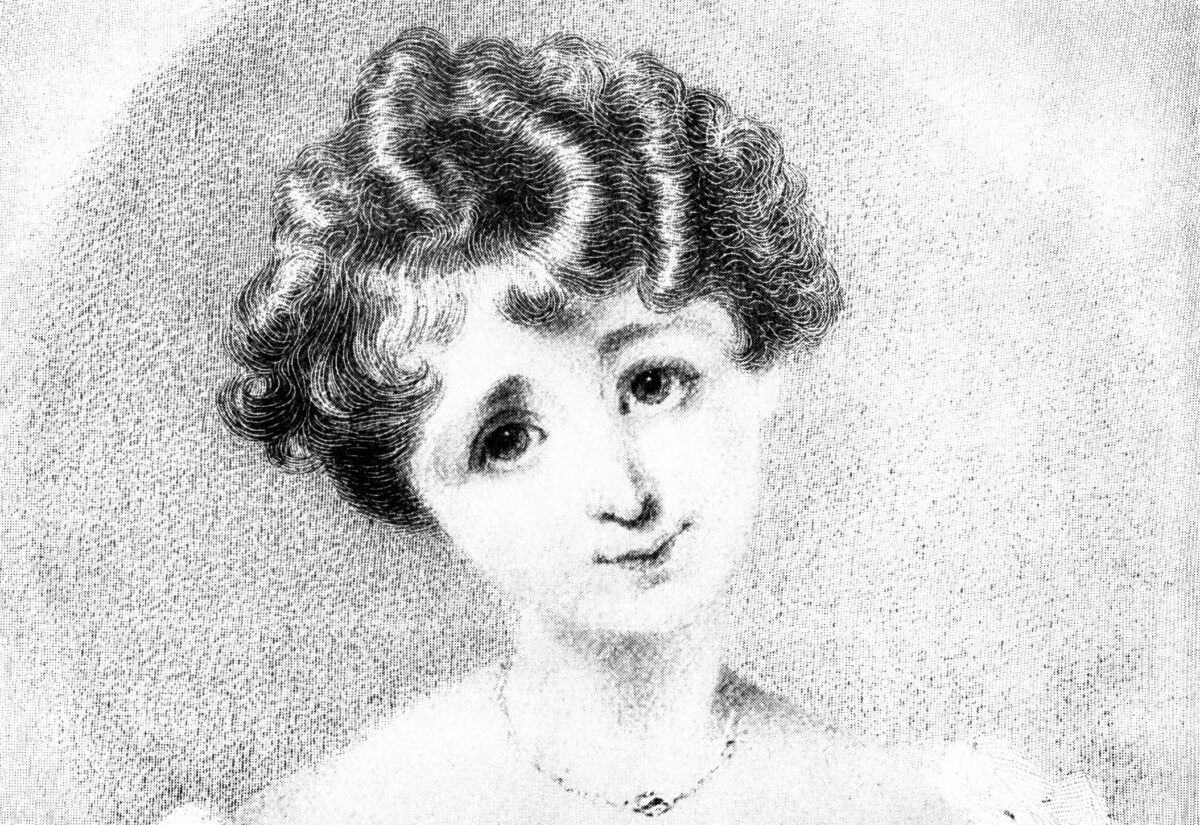 Getty Images
Getty ImagesHistory tends to remember kings, generals, and male inventors. But behind the scenes, countless women were shaping the world in ways that went unrecognised—either because of the times they lived in or because their contributions were deliberately downplayed or outright erased. These women were strategists, warriors, scholars, leaders, and visionaries. Some were quietly powerful, influencing from the background, while others took bold public stands that history tried to forget. Whether they led armies, built institutions, cracked scientific codes, or championed human rights, their impact was real and lasting. Here are 12 forgotten women who played key roles in shaping world history, even if they never made the spotlight.
Khutulun (c. 1260–1306)
The great-great-granddaughter of Genghis Khan, Khutulun was a Mongol warrior princess who defied all expectations. She rode alongside her father, the ruler Kaidu, into battle and held a respected command in the Mongol military. What set her apart, however, was her strength as a wrestler. She issued a challenge to potential suitors: any man who could defeat her in a wrestling match could marry her. Those who lost had to forfeit horses as payment—and she never lost.
Khutulun’s political influence was also considerable. She advised her father on military strategy and was once named his successor, although she was ultimately passed over. She had the respect of Mongol nobles and soldiers alike and likely played a greater role in shaping internal politics than many male warriors of the time. Her story was later fictionalised by writers like Marco Polo, who cast her in romantic or exaggerated roles, which undermined her historical significance. In reality, she was a commanding presence in an empire often viewed as purely male-dominated, and her legacy challenges our assumptions about who could wield power in the medieval world.
Fatima al-Fihri (c. 800–880)
Born to a wealthy family in Tunisia and later settled in Fez, Morocco, Fatima al-Fihri used her inheritance to found the University of al-Qarawiyyin in 859 CE. This institution is recognised by UNESCO and the Guinness World Records as the world’s oldest existing, continually operating degree-granting university. Fatima oversaw its design and expansion herself, fasting during the entire construction as an act of spiritual devotion.
Al-Qarawiyyin attracted some of the greatest scholars of the Islamic Golden Age and laid the foundations for European university models. The curriculum included theology, mathematics, medicine, astronomy, and languages. The university played a critical role in preserving classical knowledge during the European Dark Ages. Despite this, Fatima al-Fihri is still left out of most Western historical narratives about education and intellectual progress. Her foresight helped shape the academic traditions that spread across continents, and she stands as a symbol of scholarly achievement in the Islamic world and beyond.
Noor Inayat Khan (1914–1944)
The daughter of an Indian Sufi mystic and an American mother, Noor Inayat Khan was raised in a pacifist, multicultural household. Yet during World War II, she volunteered for Britain’s Special Operations Executive (SOE) and was deployed to occupied France. Fluent in French, she served as a radio operator, a role considered too dangerous even for most men.
Despite several close calls, Noor continued transmitting crucial intelligence to the Allies. She was known for her resilience and bravery, operating alone in Paris for months even after her network had collapsed. Eventually betrayed, she was captured and interrogated by the Gestapo but never revealed any secrets. She was executed at Dachau concentration camp in 1944. Her final word is said to have been “Liberté.” She was posthumously awarded the George Cross and the Croix de Guerre, yet her legacy remains curiously subdued in popular WWII narratives. Her story is a rare example of an Eastern woman being celebrated in a Western war narrative—though still not nearly enough.
Mary Anning (1799–1847)
Mary Anning spent her life combing the cliffs of Lyme Regis, where she discovered some of the earliest and most important fossils in palaeontological history. Among her finds were the first complete Ichthyosaurus and Plesiosaurus skeletons. These discoveries fundamentally challenged scientific thinking about prehistoric life and extinction, sparking debates among the scientific elite.
As a working-class woman in a male-dominated field, Anning was barred from scientific societies and denied credit for many of her contributions. Wealthier, better-connected men often took credit for her discoveries. Her correspondences were used by scientists like Henry De la Beche and Richard Owen, who failed to name her as a collaborator. Only in recent decades has her role as a pioneering palaeontologist gained the attention it deserves. Statues and biographies have begun to emerge, but she still deserves more widespread recognition.
Nzinga Mbande (c. 1583–1663)
Queen Nzinga of Ndongo and Matamba (in present-day Angola) fiercely resisted Portuguese colonisation and the transatlantic slave trade. She negotiated directly with European powers, often under duress, and converted to Christianity as a political manoeuvre to gain favourable terms. When diplomacy failed, she launched military campaigns to defend her people’s sovereignty.
Nzinga adopted tactics from European warfare and maintained one of the longest-standing resistances to colonial encroachment in Africa. She ruled for over three decades, forming coalitions with other African leaders and incorporating escaped slaves into her armies. Though vilified in colonial records, she remains a symbol of anti-imperialist struggle in African history. Today, she is celebrated in Angola as a national heroine, and her story is increasingly recognised by scholars of colonial resistance.
Ching Shih (1775–1844)
Starting life as a sex worker in a floating brothel, Ching Shih married a notorious pirate commander and quickly became his equal in managing the Red Flag Fleet. Upon his death, she took over and consolidated control over thousands of pirates across the South China Sea. Her naval empire rivalled the power of several nations.
She introduced a strict code of conduct, governed trade routes, and enforced discipline within her ranks. Her rules protected female captives and ensured fair distribution of loot. Despite repeated attacks by the Chinese navy and Western powers, Ching Shih was never defeated. In a rare outcome for pirates, she negotiated a peaceful surrender and lived out her days running a gambling house. Her achievements remain extraordinary—and largely omitted from maritime history. She stands as one of the most successful pirates in history, male or female.
Tomoe Gozen (c. 1157–1247)
A rare female samurai in Japan’s feudal era, Tomoe Gozen fought in the Genpei War during the late 12th century. According to chronicles like the Heike Monogatari, she was known for her beauty, strength, and unmatched skill with weapons. She reportedly led men into battle, captured enemies, and fought fearlessly.
After the war, her fate is unclear—some stories say she became a nun, others that she vanished into obscurity. Her role as a samurai was exceptional not just because of her gender, but because she was respected as a leader. Yet in popular culture, her story is either fictionalised or forgotten, making her one of history’s most overlooked warriors. Her name occasionally appears in Japanese media, but she deserves broader recognition as a skilled and fearless warrior.
Ada Lovelace (1815–1852)
Daughter of poet Lord Byron, Ada Lovelace defied expectations by immersing herself in mathematics. She worked with inventor Charles Babbage on his proposed Analytical Engine and wrote what is considered the first algorithm designed to be executed by a machine.
More than just a programmer, Lovelace speculated about the broader applications of computing—predicting that machines could be used to create music and art. She understood that computers could go far beyond calculations, an insight that anticipated the digital age. Her contributions were forgotten for nearly a century and only rediscovered in the 1950s. Today, she’s increasingly acknowledged, but she’s still not a household name in the way other tech pioneers are.
Hypatia of Alexandria (c. 360–415 CE)
A prominent scholar in one of the ancient world’s greatest centres of learning, Hypatia taught mathematics, astronomy, and philosophy at the Library of Alexandria. She was respected across the Roman Empire for her intellect and was a key figure in the Neoplatonist school of thought.
In a time of rising religious tension, her role as a female pagan intellectual made her a target. She was murdered by a Christian mob, and her death symbolised the broader decline of classical learning. Most of her works were lost, but her name survived as a martyr of scientific thought and female scholarship. In recent years, she has become a feminist icon in historical scholarship, symbolising the violent silencing of women’s voices in academia.
Sophie Scholl (1921–1943)
A German university student, Sophie Scholl co-founded the White Rose resistance movement during Nazi rule. She and her brother distributed leaflets condemning Hitler’s regime and calling for non-violent resistance. Their words were powerful and courageous at a time when dissent was punishable by death.
After being caught, Sophie was interrogated and sentenced to death. She remained defiant until the end, reportedly saying, “What does my death matter, if through us, thousands of people are awakened and stirred to action?” Her story is still not widely taught outside Germany, despite her extraordinary courage and moral clarity. Memorials now honour her bravery, but her story still deserves wider global recognition.
Wang Zhenyi (1768–1797)
Born into a scholarly family in Qing Dynasty China, Wang Zhenyi broke the norms of her era by pursuing education in science, literature, and astronomy. She published essays explaining eclipses and planetary motion and translated complex theories into accessible language.
She also fought against gender inequality through her poetry and writings, advocating for education for women. Her work showed that science and activism were not mutually exclusive. Though she died young, her intellectual legacy offers a glimpse into a more inclusive scientific past. Today, she is sometimes cited in Chinese academic circles, but her name is barely mentioned in global science history.
Jovita Idar (1885–1946)
A journalist, teacher, and civil rights campaigner in Texas, Jovita Idar used her writing to expose injustice faced by Mexican Americans. She edited and published several newspapers and also co-founded the League of Mexican Women, an early feminist and educational reform group.
When Texas Rangers came to shut down her paper, she physically blocked the entrance, standing up for freedom of the press. Her efforts laid the groundwork for future civil rights movements, yet her contributions have largely been left out of American history books. In recent years, there’s been renewed interest in her legacy, especially in Chicano and Latina studies programs.
These women left their mark not just in their own time, but on the world we live in today. Their stories have been pushed aside or buried, but their legacies continue to shape science, politics, resistance, and progress. They remind us that history isn’t only made by those who are remembered—it’s also shaped by those we forget. It’s time to put their names back where they belong: in the spotlight of the historical record, where they can inspire generations to come.



